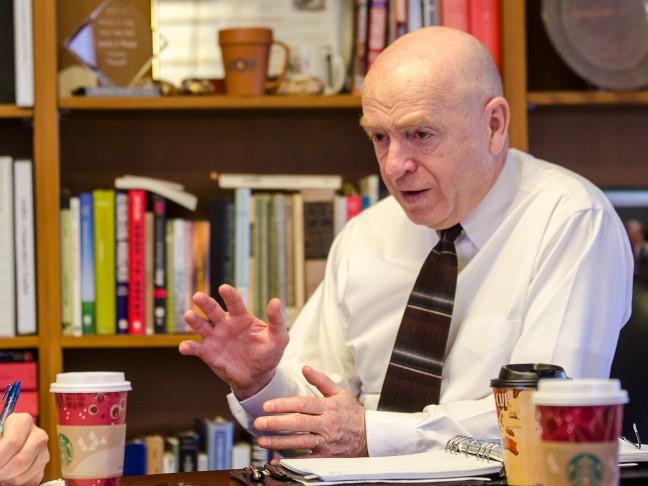Gov. Scott Walker’s administration said Wednesday that the governor would be open to launching the “public authority” model early for the University of Wisconsin System, giving the Board of Regents more time to use flexibilities to alleviate proposed cuts.
Under the change, the UW System — which faces $300 million in cuts over the next two years — could become a quasi-governmental body earlier than mid-2016 as his currently budget proposal states, the Associated Press reported.
Gov. Scott Walker has proposed the cuts for the UW System but accompanied them with increased autonomy for the system over its spending decisions. Although UW System officials have criticized the level of budget cuts, they have welcomed the increased flexibility in the proposal, as the system has sought that autonomy for years.
The statement from Walker’s office came a day after Mike Huebsch, Walker’s secretary of administration, mentioned at a Wispolitics.com luncheon that with the new public authority, the system would be able to more easily increase student fees and be able to increase the number of out-of-state students at campuses.
Huebsch’s comments drew criticism from the Associated Students of Madison.
“Students and their families must urge state policymakers to keep the costs of attendance affordable for every current and future UW-Madison student in order to ensure accessible and affordable higher education,” ASM Vice Chair Derek Field said in a statement.
On the comments from Walker’s office Wednesday, UW System President Ray Cross said in a statement that setting an earlier start for the flexibilities UW would get in the budget would still not make up for the cuts the system faces.
“While the UW System is open to changes in the timetable for implementing an authority model, the new flexibilities – regardless of when they’re implemented — will not provide sufficient savings to offset proposed budget reductions,” Cross said. “In conjunction with other internal efficiencies, reforms and cost-savings measures, however, the flexibilities are a vital part of the authority model that will provide a roadmap for the long-term viability of the system.”
The details of how the cuts will be allocated throughout the 26 UW System campuses are still unclear. Each campus’ overall budget is made up of a different percentage of state funds, as different schools receive different amounts of tuition revenue and grants.
UW-Madison, for example, faces a 14.9 percent cut to state funding, or over $57 million, while UW-Oshkosh faces a 21.4 percent cut to state funding, or about $6.2 million.
“Clearly the budget cuts in my opinion are too big, and they are going be applied too fast,” UW-Oshkosh Chancellor Andrew J. Leavitt said.
Noel Radomski, director for the Wisconsin Center for the Advancement of Postsecondary Education, or WISCAPE, said the system has discussed creating a new formula for distributing cuts based primarily on campus’ financial stability.
Radomski said some schools, like UW-Superior and UW-Eau Claire, are already facing deficits. A new formula would make it so these campuses would take lighter cuts, whereas schools not facing deficits, like UW-Madison, would not, Radomski said.













